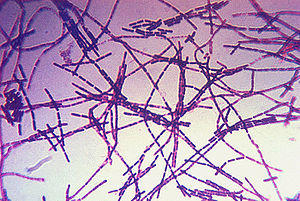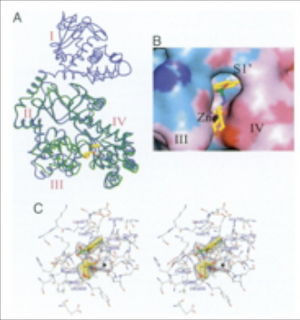Countermeasures of Bacillus anthracis use as a Biological Weapon: Difference between revisions
| Line 25: | Line 25: | ||
==References== | ==References== | ||
[1] [http://www.fas.org/programs/ssp/bio/resource/introtobw.html Introduction to Biological Weapons. 2010. | [1] [http://www.fas.org/programs/ssp/bio/resource/introtobw.html Introduction to Biological Weapons. 2010. Federation of American Scientists] | ||
[2] [http://www.fbi.gov/anthrax/amerithraxlinks.htm “Amerithrax Investigation” Federal Bureau of Investigaton, 2010.] | [2] [http://www.fbi.gov/anthrax/amerithraxlinks.htm “Amerithrax Investigation” Federal Bureau of Investigaton, 2010.] | ||
Revision as of 22:58, 18 April 2010
Biological Weapon Overview
Biological Weapons with varying degrees of lethality have been used for many centuries and deliver toxic classifications of microorganisms such as bacteria and viruses in such a manner that causes widespread disease among many different living organisms. While intentional infection of animals and agriculture can be fear-inducing and economically detrimental, it is the infliction of disease within the human race itself that can have an extremely dramatic effect on a country’s ability to function. The use of such weapons started off in a rather elementary and blunt fashion. For example, in 1346, citizens of Kaffa (Located on the Crimean Peninsula) were attacked by the invading Tartar army via exposure to plagued corpses leading to widespread of illness.[1] We have now begun to experience much more subtle, but increasingly efficient uses of biological weapons, as displayed in the anthrax letter attack on multiple media and news offices and two United States senators in 2001, where 17 people were infected and five were killed as a result of exposure to anthrax spores. [2]
While some may underestimate the possible impact of biological weapons relative to that of other weapons of mass destruction, such attacks should not by any means be taken lightly. A large factor as to why people do not necessarily see the potential for danger is due to the fact that the impact is more often than not initially undetectable, and even the full potential of exposure can be delayed since most weapons of this nature can live outside of a host organism for long periods of time while dormant. As such, biological weapons can be transmissible and can travel from one infected person to another; perpetuating the spread of the virus. In conjunction, these pathogens require a certain incubation period that varies from one pathogenetic species to another, so it is quite likely that an infected individual can transfer the disease before they are aware that they are affected.
Bacillus anthracis
Introduce the topic of your paper. What microorganisms are of interest? Habitat? Applications for medicine and/or environment?
Section 1
Include some current research, with at least one figure showing data.
Lethal Factor Inhibition
Section 3
Include some current research, with at least one figure showing data.
Conclusion
Overall text length at least 3,000 words, with at least 3 figures.
References
[1] Introduction to Biological Weapons. 2010. Federation of American Scientists
[2] “Amerithrax Investigation” Federal Bureau of Investigaton, 2010.
Edited by student of Joan Slonczewski for BIOL 238 Microbiology, 2010, Kenyon College.


